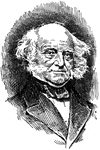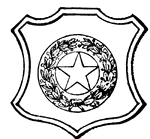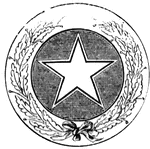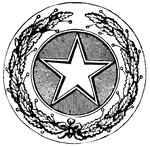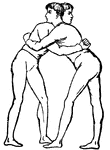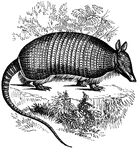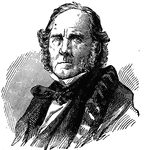
Samuel Houston
(1793-1863) Leader of Texas who fought in the War of 1812. He was the governor of Texas once it became…
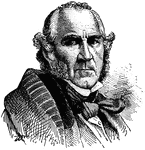
Sam Houston
(1793-1863) Leader of Texas who fought in the War of 1812. He was the governor of Texas once it became…
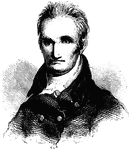
William Polk
(1816-1898) Military and Political leader of Texas. He raised Confederate troops in the West

Kinkajou
The kinkajou lives in S. America and spends most of its life in trees. It hunts at night for insects…

Clam
this is the common round clam of the Atlantic coast found from Texas to Cape Cod. It is frequently seen…

Pitcher Plant Leaf
Here is a leaf of the pitcher plant. You see that it has an opening at the upper end. It can hold considerable…
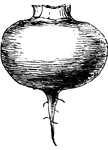
Turnip Root
Roots of the turnip are designed to absorb moisture and matter from soil, and to hold nutrients for…
Carrot Root
Roots of the carrot are designed to absorb moisture and matter from soil, and to hold nutrients for…
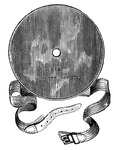
Laryngoscope
This part of the Laryngoscope consists of a large concave mirror with a small hold in the middle.
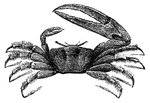
Fiddler Crab
A crab having one claw much larger than the other. As they walk sideways, they hold up the large claw…
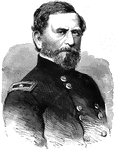
J. T. Sprague
"General J. T. Sprague, born in Newburyport, Mass., July 3rd, 1810, died in New York city, September…
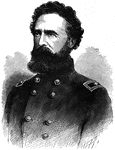
George Sykes
"General George Sykes, born in Dover, Del., October 9th, 1822, died in Brownsville, Texas, February…
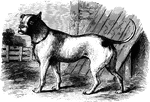
Bull Dog
"The bull dog has a round, thick head, a turned-up nose, and thick and pendulous lips. He is of moderate…

Battle of Cross Keys
"Battle of Cross Keys, Sunday June 8th, 1862- centre and front of the Federal army in the engagement.…

Paducah, Kentucky
"View of the town of Paducah, Ky., at the confluence of the rivers Ohio and Tennessee, the Northern…
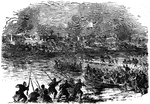
The Forlorn Hope
"'The Forlorn Hope.' Volunteers storming party, consisting of portions of the Seventh Michigan and Nineteenth…

Thoroughfare Gap
"Thoroughfare Gap, Va., a pass in the mountains on the Manassas Gap Railroad, near Strasburg, held by…
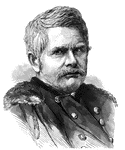
General Edward O. C. Ord
"General Ord, born in Cumberland, Md., October 18th, 1818, died in Havana, Cuba, July 22nd, 1883, was…

General George W. Cullum
"General Cullum, born in New York city, February 25th, 1809, died in New York city, February 28th, 1892,…
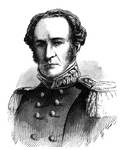
General George Stoneman
"General Stoneman, born in Busti, Chautauqua County, N. Y., August 8th, 1822, was graduated from the…

Banks Expedition
"The Banks Expedition- scene on the hurricane deck of the United States transport North Star-…
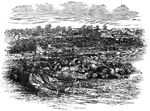
Battle of Corinth
"Battle of Corinth, Miss., October 4th, 1862. Scene in the roundabouts of Fort Robinett after the repulse…

Battle of Grand Coteau
"Battle of Grand Coteau, La., November 3rd, furious attack on the Sixtieth Indiana, Colonel Owen. On…

Battle of Spottsylvania
"The war in Virginia. Battle of Spottsylvania Courthouse- opening of the fight at Alsop's Farm, May…

Hooker's Battle
"The war in Tennessee. Hooker's Battle above the clouds, and capture of the Confederate position on…
War in Texas
"The War in Texas. Brownsville, occupied by the army under Major General N. P. Banks, in 1863. The sudden…
Recrossing the Rappahannock
"The war in Virginia. General Meade recrossing the Rappahannock, October, 1863, before Lee's advance.…

War in Louisiana
"The war in Louisiana. General Banks's army, in the advance on Shreveport, crossing Cane River, March…

Sheridan's Great Battle
"The war in Virginia- Sheridan's Great Battle with J. E. B. Stuart at Yellow Tavern, May 11th, 1864-…

Kirby Smith
"Voluntary dispersion of Kirby Smith's Confederate army at Shreveport, La., May 23rd, 1865. There was…

Battle of Grand Coteau
"The war in Louisiana- Battle of Grand Coteau- capture of the Sixty-seventh Indiana by the Texas Mounted…

Seahorse
"These animals have a head of the shape of a horse, and a long tail without any fin, but which is used…

Angler
"The fishing frog is three to five feet long. It has an enormous mouth, armed with numerous pointed…
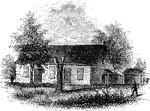
Birmingham Meeting-House
"Birmingham Meeting-house. This is a view of the southerly front of the meeting-house. The building…
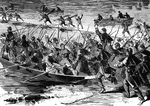
The Forlorn Hope
"'The Forlorn Hope.' Volunteers storming party, consisting of portions of the Seventh Michigan and Nineteenth…
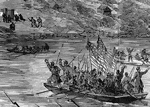
The Forlorn Hope
"'The Forlorn Hope.' Volunteers storming party, consisting of portions of the Seventh Michigan and Nineteenth…

Unio pictorium
"The unio pictorium is common in Europe, and derived its name from the fact that its shell…
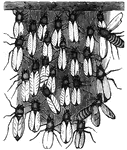
Bees Secreting Wax
"The secretion of wax, it would appear, goes on best when the bees are in a state of repose, and the…

Demosthenes
"In the oratory of more thn two thousand years Demosthenes stands in the front rank, and will always…

Aratrum
"A plough. Among the Greek and Romans the three most essential parts of the plough were-the plough tail,…

Aratrum
"A plough. Among the Greek and Romans the three most essential parts of the plough were-the plough tail,…
Whizzer
"Get a circular piece of tin, three inches or more in diameter, and cut it round the edges in the form…

Bust of Pericles
"The enormous influence which Pericles exercised for so long a period over an ingenious but fickle people…
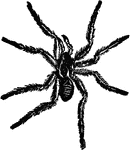
Tarantula
"The Tarantula is a large spider, with a body about an inch in length; its bite was formerly supposed…
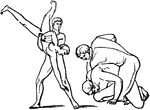
Pancratium
"An athletic game, in which all the powers of the fighter were called into action. The pancratium was…

Retis
"In this woodcut, two men are carrying the net home after the chase, and hold in their hands two of…
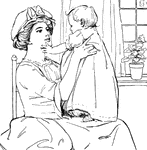
Up Little Baby
Up, little baby, stand up clear; Mother will hold you, do not fear; Dimple and smile, and chuckle and…

Zona
"Zona, also called cingulum, a girdle or zone, worn about the loins by both sexes. The chief use of…

As Skirmishers, Guide Right (Left), March Signal
"Raise both arms laterally until horizontal; hold the arm on the side of the guide steadily in the horizontal…
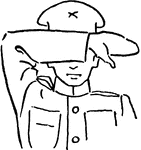
Suspend Firing
"Raise and hold the forearm steadily in a horizontal position in front of the forehead, palm of the…
